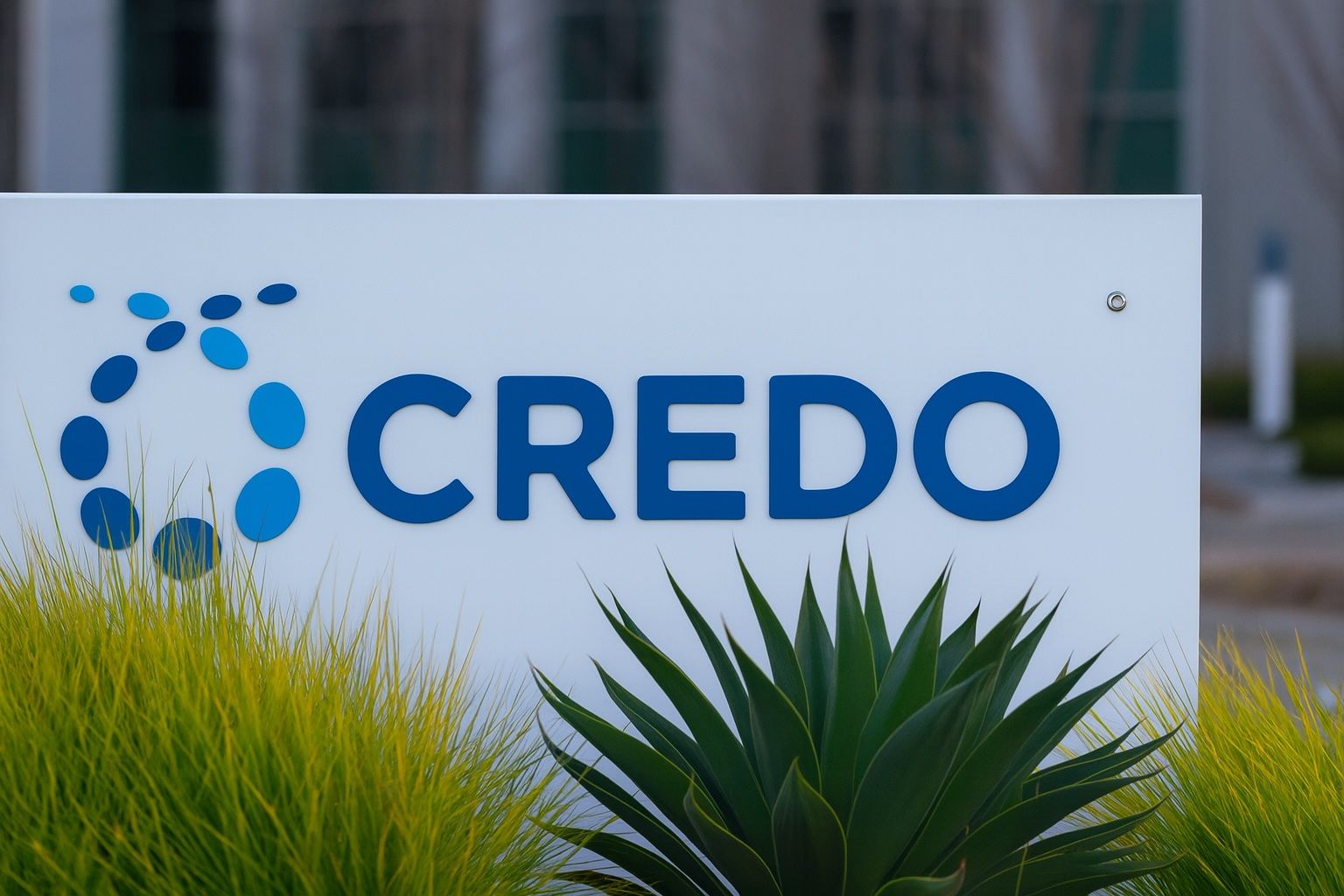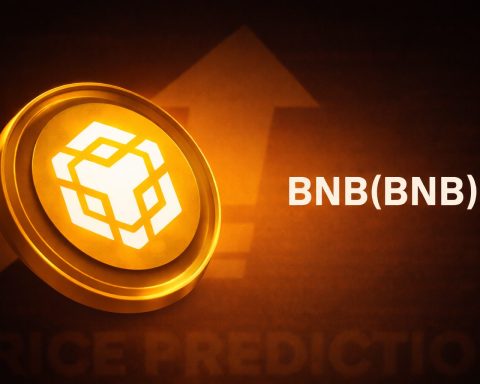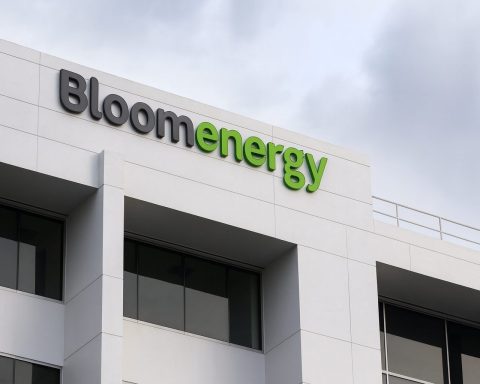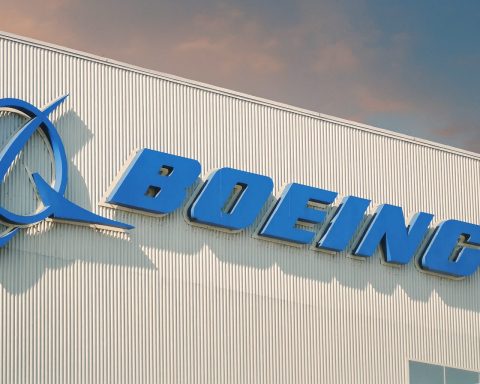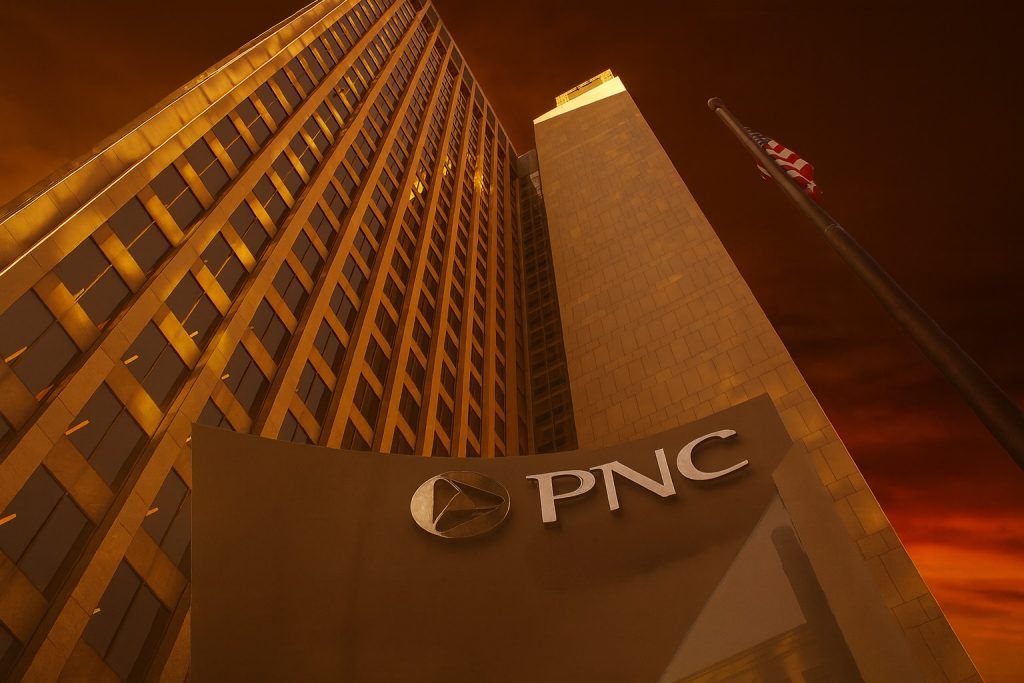- Volatile week for CRDO: Credo Technology Group’s stock has whipsawed in recent days, closing at $129.75 after a 13% plunge on Tuesday, October 14, following a surge to about $150 earlier in the week [1]. The stock even rebounded roughly 6% in pre-market trading Wednesday on optimism around new AI deals [2], highlighting extreme volatility amid shifting investor sentiment.
- New AI products unveiled: Credo launched its new “ZeroFlap” optical transceivers on October 13, promising ultra-fast 400G–1.6Tbps data links that virtually eliminate network failures in AI supercomputers [3]. It’s also showcasing 1.6 Tbps active cables at a major industry summit, underscoring its push into high-speed data center connectivity.
- Strategic partnership with Arm: On Oct. 14, Credo joined Arm’s Total Design ecosystem to co-develop custom silicon for AI data centers [4]. This alliance lets Credo integrate its high-speed connectivity chiplets with Arm’s processors, which executives say will drive more energy-efficient, reliable links in next-gen AI hardware [5].
- Financing growth & M&A: Credo recently filed for a $750 million at-the-market stock offering to fuel expansion [6]. The dilution initially spooked investors (shares fell ~7% after the Oct. 6 announcement) before rebounding. The company also acquired Hyperlume, a startup making microLED optical links, for ~$40–50 million [7] – bolstering Credo’s portfolio in ultra-fast chip-to-chip connectivity for AI.
- Skyrocketing growth, rich valuation: Credo’s revenue soared 273% year-on-year last quarter to $223 million [8], helping double its fiscal 2025 sales (to $436.8M) and achieve its first annual profit [9]. Wall Street expects triple-digit growth to continue (FY2026 revenue +120% forecast) [10]. However, after its recent pullback the stock still commands a ~$25 billion market cap and a price-to-earnings ratio north of 200 [11] – a lofty valuation that already prices in a big “AI boom” future.
CRDO Stock on a Roller Coaster Ride
It’s been a wild ride for Credo (NASDAQ: CRDO) stock. Shares have skyrocketed over 1,300% since the company’s 2022 IPO [12], massively outperforming the broader market thanks to Credo’s niche in AI data-center hardware. But that meteoric rise now comes with gut-churning swings. Just in the past week, CRDO see-sawed from steep drops to euphoric pops and back again.
After tumbling about 8% last Friday to ~$138 amid a broader tech sell-off [13], CRDO surged 7.97% on Monday (Oct. 13) to nearly $150 [14], apparently driven by bargain-hunting and excitement over new product news (more on that below). Any relief rally was short-lived – by Tuesday Oct. 14 the stock reversed, plunging ~13% intraday from the $150s down to roughly $130 at the close [15]. In fact, CRDO briefly touched $151 early Tuesday before sellers rushed in [16]. Such whipsaw action has defined Credo’s week: one day down 6.9%, next day up 8.5%, then down 13% [17].
What’s driving the turbulence? Analysts say the extreme moves reflect a “tug-of-war between massive growth optimism and profit-taking fears” [18]. As a high-flying momentum stock tied to the hottest theme – AI infrastructure – Credo can spike on any positive news, yet any hint of overvaluation triggers swift pullbacks. For example, when Credo announced its large share offering in early October, dilution worries sent the stock sliding before momentum buyers jumped back in [19]. Then new AI product launches fueled another spike Monday, only for a classic “sell the news” drop on Tuesday as traders cashed out gains [20]. Even Credo’s bulls admit the stock may be overextended near-term; its rich valuation and “overbought” technical signals could lead to more short-term volatility ahead [21]. Additionally, recent insider selling – many company insiders have been cashing out shares – has likely amplified the swings by undermining investor confidence despite Credo’s strong growth [22]. In short, volatility is the price of admission for this kind of growth story right now.
New AI Products Fueling Data Center Hype
A big part of the recent rally (and subsequent hype) came from Credo’s latest product unveiling aimed at the AI hardware boom. On October 13, the company rolled out its new ZeroFlap Optical Transceivers, billing it as a “reliability revolution” for AI networks [23]. In plain terms, these are advanced fiber-optic modules that blast data between servers at 400G to 1.6 Tbps speeds [24]. They carry Credo’s trademark “ZeroFlap” design – technology that virtually eliminates network “flaps,” those momentary signal failures that can plague large GPU clusters.
Why does that matter? In modern AI supercomputers, hundreds or thousands of GPUs are linked together, and even a tiny glitch in those connections can halt a training job or knock out an entire server rack. Credo notes each “link flap” in a massive AI cluster can cost $30,000–$50,000 in downtime [25]. The company’s ZeroFlap architecture – first proven in its active copper cables – has delivered up to 1,000× better reliability, essentially eliminating flaps over billions of hours in real-world use [26]. Now, Credo is extending that ultra-reliability to optical fiber, which is crucial as data centers upgrade from copper to optical links for longer distances and higher speeds. The new ZeroFlap optical modules pair custom digital signal processors with Credo’s monitoring software to catch and correct signal degradation in real time [27], aiming to fix issues before they impact AI workloads.
The tech industry is taking notice. Credo is showcasing these innovations this week at the OCP Global Summit (a major data center conference) and demoing its 1.6 terabit-per-second active cables for AI networks [28]. The push into cutting-edge optical and high-speed interconnects shows Credo expanding beyond its roots (high-speed copper cables) to cover every link in the data center chain – a strategy to cement itself as a go-to provider of networking “plumbing” for AI and cloud giants.
New Partnerships Accelerate AI Ambitions
Credo isn’t going it alone in its quest to dominate AI infrastructure. On October 14, the company announced it has joined Arm’s “Total Design” ecosystem – a strategic partnership program to co-develop next-generation chips for AI data centers [29]. Arm, famous for its processor architectures, launched Total Design to unite various chip specialists under one umbrella. By joining, Credo can integrate its high-speed SerDes chiplets and connectivity IP alongside Arm’s Neoverse server processors when customers design custom silicon for AI. In practice, a cloud provider or hardware firm could more easily plug Credo’s ultra-fast data movement technology into an Arm-based AI chip design.
Arm’s infrastructure VP Eddie Ramirez highlighted the need for this kind of collaboration, noting that as AI workloads explode, “the industry needs easier ways to work together on specialized solutions” [30]. Credo’s VP of marketing Jeff Twombly echoed that sentiment, saying the Arm alliance “reinforces our commitment” to partnering on the core tech behind energy-efficient, highly reliable connectivity for massive AI workloads [31]. In short, Credo is now plugged into a major chip design network – one that could see its connectivity blocks designed into cutting-edge AI accelerators and data center platforms in the coming years.
This isn’t the only partnership drawing attention. Credo has been aligning with other industry players too – TipRanks notes collaborations “including those with Oracle” as crucial to its market strategy [32]. These alliances give Credo validation and routes to big customers, potentially amplifying its reach in the fast-growing AI server market.
Funding Expansion and Acquisitions
To bankroll its ambitious growth, Credo moved to raise fresh capital this month – a development that initially rattled some investors. In early October, the company filed to sell up to $750 million in new shares via an at-the-market offering [33]. Essentially, this allows Credo to issue and sell shares gradually into the open market to raise cash. The announcement on Oct. 6 triggered dilution fears (since issuing more shares can dilute existing shareholders), and CRDO stock fell about 7% the next day [34]. However, once the shock wore off, the stock quickly found its footing and rebounded, as investors recognized the offering would bolster Credo’s war chest for expansion.
Having a stronger balance sheet could be important for Credo as it scales production and R&D to meet booming demand. Management now has more financial firepower to “invest in next-gen products ahead of rivals, and withstand any industry downturns better,” noted one analysis [35]. In other words, the cash raise is a strategic move to ensure Credo can seize opportunities (and navigate any bumps) in the white-hot AI infrastructure race.
Credo is also using M&A to expand its technology edge. The company quietly acquired Hyperlume, Inc., a small California startup specializing in microLED-based optical interconnects, for roughly $40–50 million in cash and stock [36]. Hyperlume’s tech focuses on ultra-fast optical links for chip-to-chip communication (think of it as tiny fiber-optic links between processors). By bringing this in-house, Credo broadens its portfolio of high-speed connection solutions. Analysts at Stifel were impressed by the Hyperlume deal and Credo’s recent product launches, saying the company’s execution in the AI connectivity market is “hitting on all cylinders” and reinforcing its leadership in high-bandwidth networking [37]. In fact, Stifel had boosted its price target for CRDO from around $130 to $160 after the Hyperlume news, and kept that target following the ZeroFlap debut – implying they see ~30% upside from recent prices [38].
Explosive Growth vs. Lofty Valuation
Credo’s financial growth has been nothing short of explosive. The company reported revenue of $223 million last quarter, a +273.6% increase year-over-year [39] as hyperscale customers raced to upgrade data center bandwidth for AI. For the full fiscal 2025, sales more than doubled (+126% to $436.8 million) and Credo swung to its first annual profit [40] – a milestone validating its business model. The demand surge is expected to continue: analysts forecast another ~120% revenue jump in FY2026 [41], meaning Credo could more than double its sales again next year if all goes well.
This kind of growth firmly puts Credo among the fastest-growing semiconductor companies. It’s riding powerful tailwinds, from cloud giants building AI supercomputers to data centers everywhere needing faster, more reliable connections. A recent investor letter from Renaissance Investment Management summed it up: “Credo is benefiting from AI data center buildouts,” as its connectivity solutions help tech firms alleviate network bottlenecks in AI systems [42] [43]. With secular drivers like AI and cloud computing, Credo’s expansion story is compelling.
However, the flip side of hyper-growth is a sky-high valuation. Even after pulling back to around $130, Credo commands roughly a $25 billion market capitalization and trades at over 200× earnings (trailing P/E) and around 40× sales [44] [45]. In other words, investors are already pricing in years of blistering growth and market dominance. “High-octane stocks often command eye-popping multiples, but investors must ask if the growth is sustainable,” one Nasdaq analysis cautioned [46]. The current valuation assumes Credo will continue growing at breakneck speed for some time. Any stumble – say a quarter where growth “slows” to merely double-digits, or a hiccup in execution – could trigger a sharp correction when expectations are this high [47]. This anxiety was evident when shares overshot analysts’ targets: as of early October, the average 12-month price target for CRDO was about $128.50 [48], actually below the stock’s peak in the $140s, highlighting some on Wall Street felt the stock had gotten ahead of itself. (Those targets are likely rising now as firms update models for Credo’s new developments.)
It’s also worth noting that semiconductor cycles can be unforgiving. While Credo is tied to the red-hot AI trend today, chip demand can ebb and flow. If AI investment by the big players cools off (due to budget tightening or having built sufficient capacity), Credo’s growth could downshift. And competition looms: tech giants or larger chip firms might develop similar high-speed connectivity solutions in-house, potentially challenging Credo’s edge over the longer term [49] [50]. These are longer-term risks investors are watching, even as the near-term outlook remains robust.
Meanwhile, there are tangible positives balancing those concerns. Credo’s margins are strong – ~66% gross margins and about 21% net margin currently [51] – indicating it can grow profitably. The company’s balance sheet is also very solid (minimal debt, plenty of cash) [52], especially with the new equity raise. That financial strength gives Credo resilience if market conditions change. And big-picture demand signals still look favorable: McKinsey projects global data center capacity will more than triple by 2030, with nearly $7 trillion invested in digital infrastructure [53] [54]. That rising tide could lift all boats – Credo included – as the world’s appetite for AI and cloud computing drives an upgrade cycle in data center networks.
Analyst Sentiment: Mostly Bullish, With Caveats
Despite the stock’s high-flying valuation, Wall Street analysts remain overwhelmingly bullish on Credo’s prospects. According to MarketBeat, all 15 analysts covering CRDO rate it a Buy or Strong Buy – zero sell ratings – as of this month [55]. The upbeat consensus reflects Credo’s unique positioning in the AI infrastructure space and its execution so far. “Credo has established itself as a picks-and-shovels supplier to the AI gold rush,” wrote analysts at William Blair, who initiated coverage in October with an Outperform rating [56]. In their view, Credo’s expanding portfolio (from its core active cables to new optical chips like the Dove and Lark DSPs) positions it to capture a larger share of future data center upgrades [57]. Even as short-term traders wrestle with volatility, most experts seem to agree that the company’s fundamentals and long-term opportunity warrant a positive stance.
Several firms have aggressively raised their price targets on CRDO following the company’s recent performance. Needham & Co. hiked its target from $85 to $150 in early September while maintaining a Buy, and Barclays went even further – from $85 to $165 – with an Overweight rating [58]. Those moves came after Credo’s blowout summer quarter (the $223M revenue that crushed expectations) and reflected confidence that demand for Credo’s tech will stay red-hot. Indeed, CRDO stock quickly surged into the $150–$170 range after those calls [59]. Barclays’ $165 target remains one of the higher on the Street, signaling optimism that Credo can keep outgrowing peers. And at least one analyst is even more bullish: TipRanks recently highlighted a lofty $170 price target from a top-rated analyst as a bullish case for Credo [60] – implying substantial upside if the company executes flawlessly.
That said, not everyone is pounding the table without caution. Some market commentators have urged a more balanced view given the stock’s rapid appreciation. As noted earlier, there’s recognition that the stock’s valuation leaves little room for error. We’ve already seen insiders take some profits (19 insider sell transactions in the past three months, per GuruFocus data [61]), which could indicate that even those closest to the company think shares have run hot. Additionally, technical analysts point out the stock’s beta of 3.1 signals high volatility [62], and momentum gauges recently flashed overbought conditions [63]. These caveats don’t negate the bullish fundamental outlook, but they suggest investors should expect a bumpy ride. “High-octane stocks often command eye-popping multiples… investors must ask if growth is sustainable,” one analysis warned, encapsulating the cautious optimism around Credo [64].
Outlook: Short-Term Jitters, Long-Term Potential
Looking ahead, the short-term outlook for CRDO remains mixed. From a technical standpoint, the stock is still in a strong uptrend but has shown signs of momentum cooling off in the very near term. For example, Monday’s big jump came on lower-than-average trading volume – a divergence some see as an early warning that the recent rally was losing steam [65]. Likewise, before this week’s pullback, Credo’s relative strength index (RSI) had pushed into “overbought” territory [66], suggesting the stock needed to “catch its breath” after its parabolic run. It wouldn’t be surprising to see more choppiness or even a further short-term dip if some investors continue locking in profits. In fact, quantitative models that look at momentum have given Credo a top-tier score (94/100) [67] and even project the stock could climb another ~50% over the next three months based on its trend – but with very wide error bars [68]. Translation: the upside potential is significant if the rally reignites, but so is the risk of sharp swings. Traders should brace for volatility as the tug-of-war between growth bulls and profit-takers plays out a bit longer.
The long-term picture, by contrast, remains broadly positive for Credo. The company sits at the crossroads of several powerful tech megatrends: the acceleration of AI, the expansion of cloud data centers, and the industry’s shift toward new networking technologies (like optical interconnects). As one tech site noted, Credo is effectively providing the “plumbing” for the AI gold rush [69] – its high-speed cables and chips are the behind-the-scenes gear enabling AI supercomputers and hyper-scale cloud platforms to move data faster and more reliably. That niche is crucial and likely to grow. Massive AI training clusters (think of the infrastructure behind models like ChatGPT or self-driving car algorithms) require tens of thousands of high-bandwidth connections, exactly the kind of problem Credo’s solutions address [70]. As data centers pack ever more GPUs into racks, they face signal integrity and power challenges at scale – areas where Credo’s active cables and optical DSPs excel [71]. Notably, Credo isn’t betting on just one technology; it’s invested in both copper and optical connectivity, which means however the architecture debates shake out, it can supply what customers need. “Copper will remain prevalent… but we see an expanding total market for both copper and optical connectivity,” Credo CEO Bill Brennan said recently [72], emphasizing that the company is positioning to win no matter how data centers evolve. In fact, management expects to double Credo’s optical interconnect revenue in fiscal 2026 while still growing its copper-based sales [73] – a sign of confidence that demand is rising across the board.
All these factors give Credo a long runway for growth. The multi-year outlook for AI infrastructure is often described as a mega-cycle. Industry research forecasts trillions in data center investment this decade [74] [75], which could lift specialized suppliers like Credo to new heights. Of course, sustaining today’s breakneck growth will require near-flawless execution. Competitors will aim to close the gap, and geopolitical issues (like export controls on advanced tech) could introduce headwinds. Yet if Credo continues to innovate and deliver – and if the AI build-out stays on fire – the company could very well grow into its valuation and beyond over the long term [76].
Bottom line: Credo Technology Group has emerged as an exciting, albeit volatile, player in the AI hardware arena. Its recent product launches, partnerships, and fundraising moves show a company gearing up to maintain momentum in a fast-growing market. For investors, CRDO offers significant promise as a pick-and-shovel play behind the AI revolution, but it comes with stomach-churning stock swings in the near term. The next few months may remain a bumpy ride, but for those with a longer view, Credo is positioning itself to be a key enabler of the data center of the future – one that some call a “$7 trillion opportunity” by 2030 [77] [78]. How the stock ultimately fares will hinge on whether the company can turn those high hopes into reality in the quarters ahead.
Sources: Credo press releases and filings; ts2.tech analysis [79] [80]; Nasdaq/Motley Fool commentary [81]; MarketBeat and TipRanks data [82] [83]; Investing.com and StreetInsider news [84] [85]; GuruFocus and Seeking Alpha updates [86] [87].
References
1. ts2.tech, 2. seekingalpha.com, 3. ts2.tech, 4. ts2.tech, 5. ts2.tech, 6. ts2.tech, 7. ts2.tech, 8. ts2.tech, 9. ts2.tech, 10. ts2.tech, 11. ts2.tech, 12. ts2.tech, 13. ts2.tech, 14. ts2.tech, 15. ts2.tech, 16. ts2.tech, 17. ts2.tech, 18. ts2.tech, 19. ts2.tech, 20. ts2.tech, 21. ts2.tech, 22. www.tipranks.com, 23. ts2.tech, 24. ts2.tech, 25. ts2.tech, 26. ts2.tech, 27. ts2.tech, 28. ts2.tech, 29. ts2.tech, 30. ts2.tech, 31. ts2.tech, 32. www.tipranks.com, 33. ts2.tech, 34. ts2.tech, 35. ts2.tech, 36. ts2.tech, 37. ts2.tech, 38. ts2.tech, 39. ts2.tech, 40. ts2.tech, 41. ts2.tech, 42. finance.yahoo.com, 43. www.benzinga.com, 44. ts2.tech, 45. www.gurufocus.com, 46. ts2.tech, 47. ts2.tech, 48. ts2.tech, 49. ts2.tech, 50. ts2.tech, 51. www.gurufocus.com, 52. www.gurufocus.com, 53. ts2.tech, 54. ts2.tech, 55. ts2.tech, 56. ts2.tech, 57. ts2.tech, 58. ts2.tech, 59. ts2.tech, 60. ts2.tech, 61. www.gurufocus.com, 62. www.gurufocus.com, 63. ts2.tech, 64. ts2.tech, 65. ts2.tech, 66. ts2.tech, 67. ts2.tech, 68. ts2.tech, 69. ts2.tech, 70. ts2.tech, 71. ts2.tech, 72. ts2.tech, 73. ts2.tech, 74. ts2.tech, 75. ts2.tech, 76. ts2.tech, 77. ts2.tech, 78. ts2.tech, 79. ts2.tech, 80. ts2.tech, 81. ts2.tech, 82. ts2.tech, 83. www.tipranks.com, 84. ts2.tech, 85. ts2.tech, 86. www.gurufocus.com, 87. seekingalpha.com
